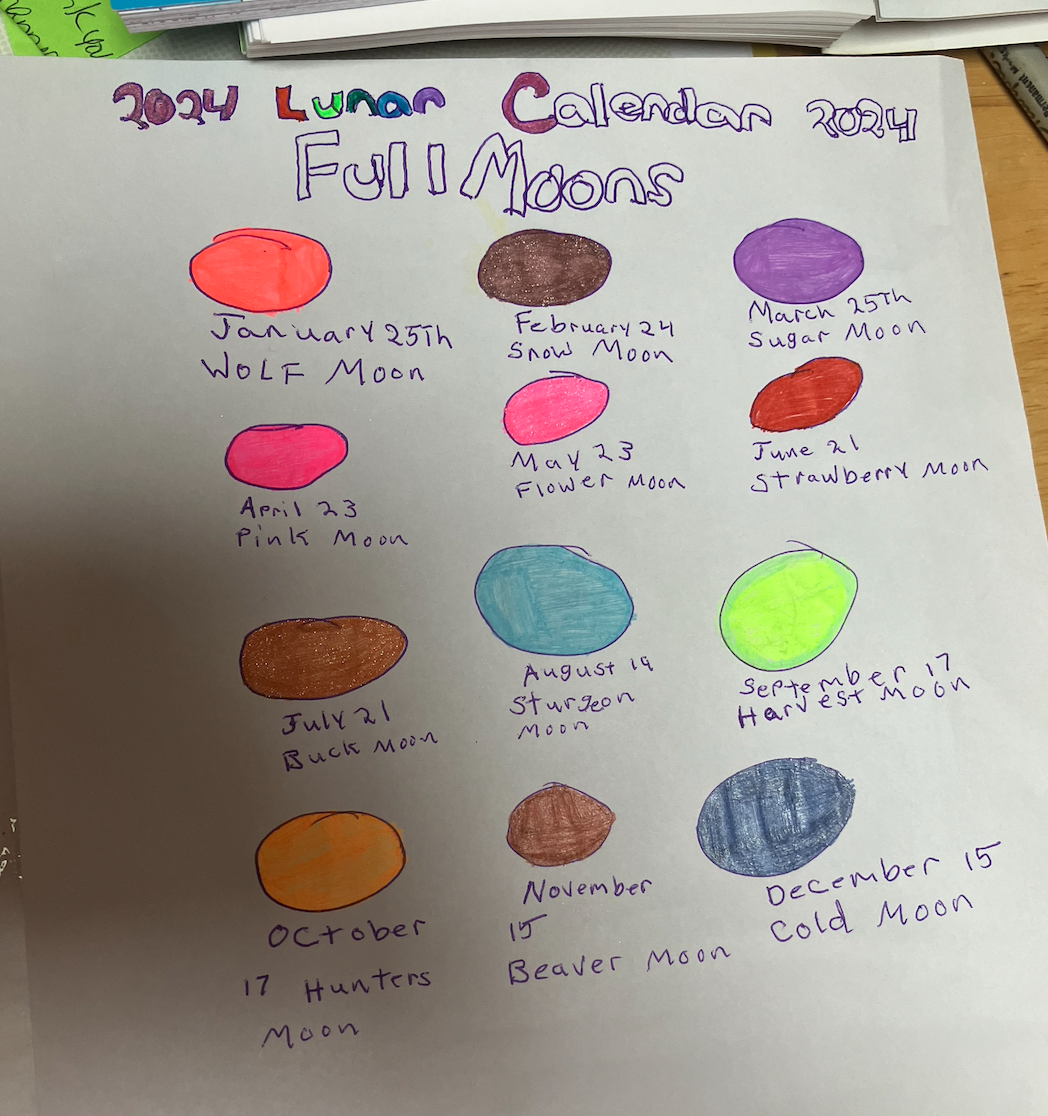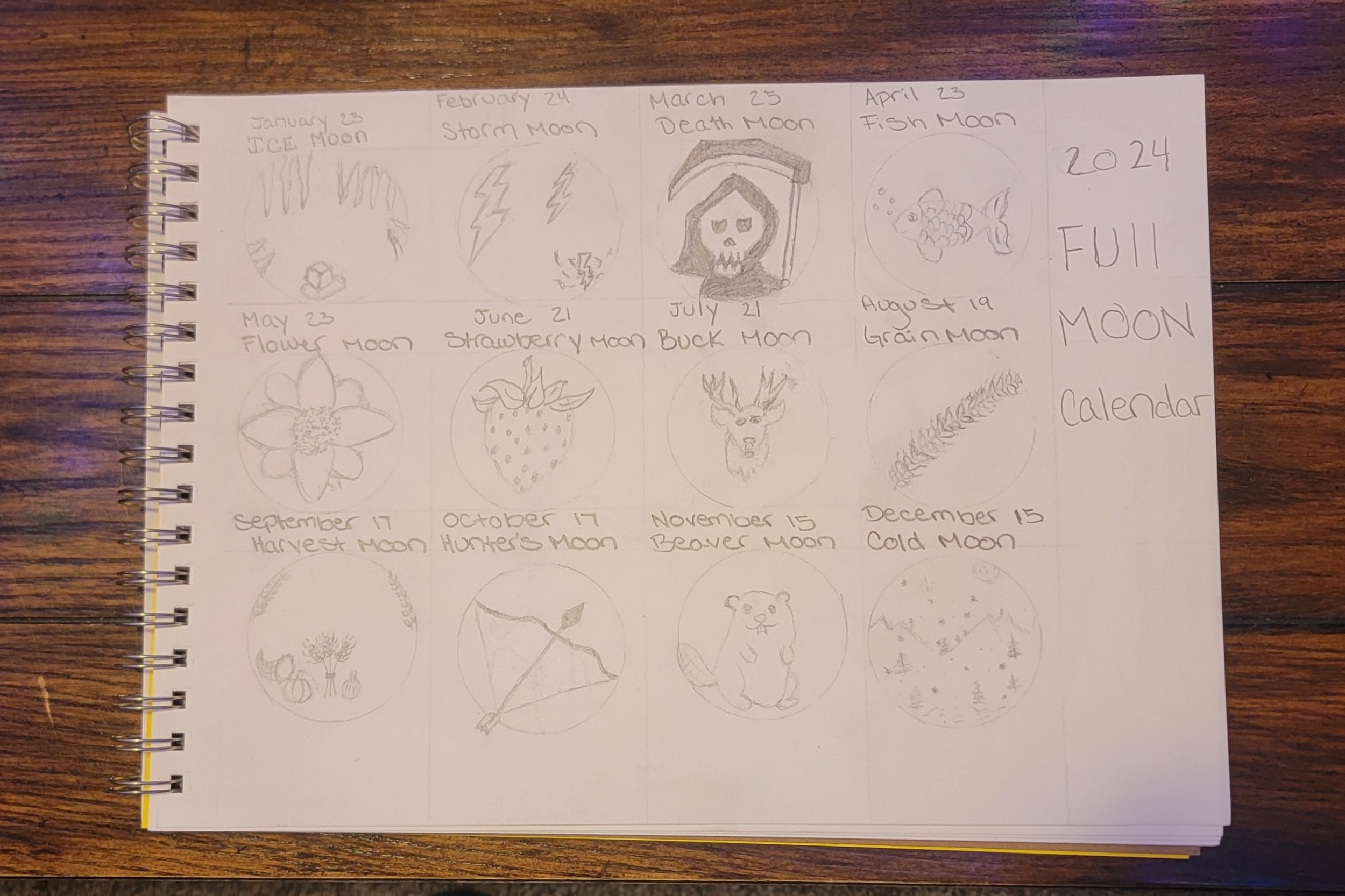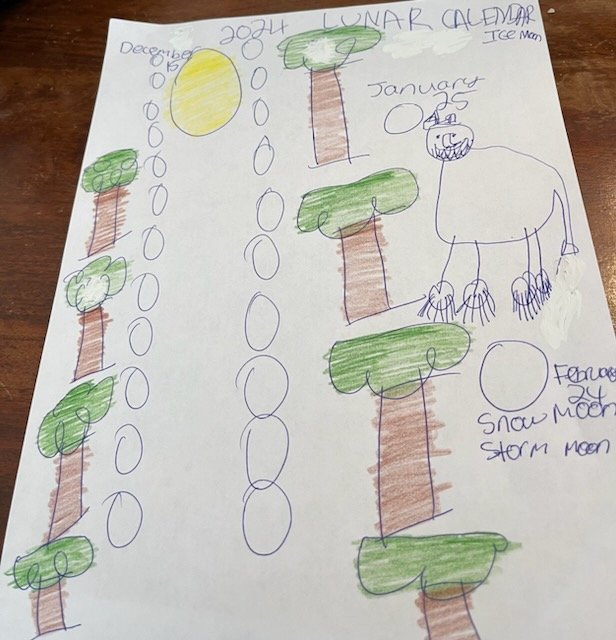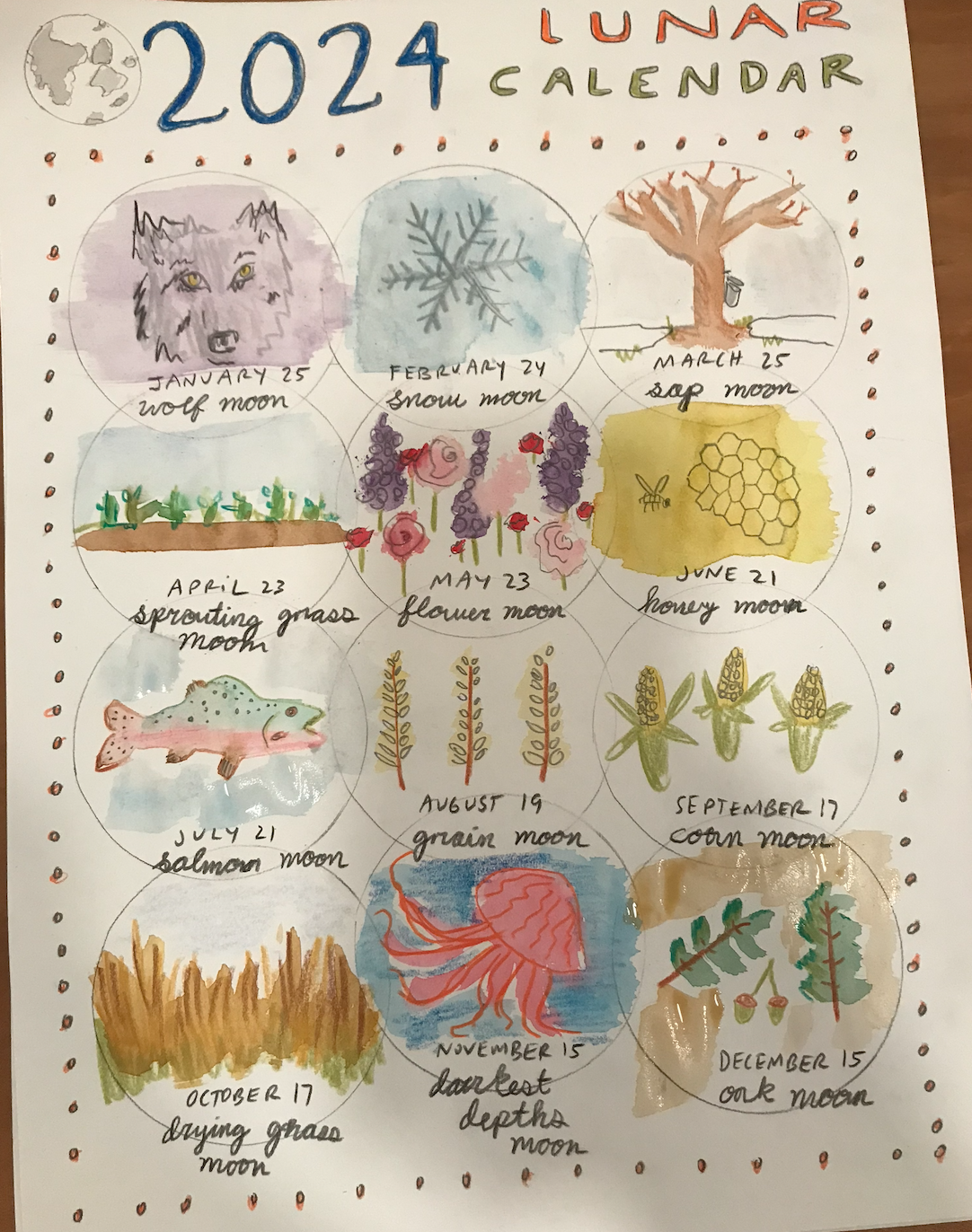Let The Moon Guide You
“The Moon” by Robert Louis Stevenson
The moon has a face like the clock in the hall;
She shines on thieves on the garden wall,
On streets and fields and harbour quays,
And birdies asleep in the forks of the trees.
The squalling cat and the squeaking mouse,
The howling dog by the door of the house,
The bat that lies in bed at noon,
All love to be out by the light of the moon.
But all of the things that belong to the day
Cuddle to sleep to be out of her way;
And flowers and children close their eyes
Till up in the morning the sun shall arise.
I was reminded of this sweet poem recently while making lunar calendars here at Nature Links. To ring in the new year, we recently set about making lunar calendars to chart the 12 full moons that will appear in 2024. This activity not only helped spark beautiful conversations among the group about memories and experiences of past full moons, it also helped us connect to the stories and legends passed down by generations of indigenous people before us. Names like “worm moon”, “storm moon” and “darkest depths moon”, not only give rise to mystery and intrigue, they urge us to investigate indigenous peoples’ rich and varied connections to the natural world.
Many Native American tribes named the full moons as a way to track time and mark the changing seasons. The names of the full moons often reflected the natural cycles and behaviors of the environment, including the behavior of animals, the availability of certain plants, and important cultural and spiritual events. Different tribes had their own distinct naming traditions, and the names could vary based on geographic location and local observations.
For example, the names given to full moons by the Algonquin tribes, who were prominent in the northeastern United States, were later adopted by European settlers and are still commonly used today. Some examples include the "Harvest Moon" in September, which marked the time for gathering crops, and the "Cold Moon" in December, which signaled the onset of winter.
These moon names were not only practical for tracking time and seasons but also held cultural and spiritual significance for Native American communities. The naming of full moons was part of a larger interconnected understanding of the natural world and its rhythms, which played a crucial role in the daily lives and traditions of indigenous peoples.
Before moving to rural Maine, I lived in cities for 15 years. The incessant glow of unnatural light and the confining man-made landscapes meant that my connection to the moon was unsteady and inconsequential. Now, I’d have to try hard to ignore the moon’s phases. The moon dictates how high the water will rise on my favorite beach and whether or not I need to turn on a night light as my son falls alseep. I’m more connected to the natural world in my life here and more aware of its changes.
As the sun rises on the first few days 2024, many of us recite New Year's resolutions as a path toward self-improvement and a desire for positive change. Perhaps rather than vowing to eat fewer sweets or put down our phones, we should let the moon guide us. Imagine a world where far more of us spend time reflecting on the glow of the wolf moon.
Here are a few of the lunar calendars made by Nature Links participants…






